The verdict: Like getting the snot kicked out of you by a gorgeous Italian runway model.
Versus the competition: The Alfa Romeo 4C is more visceral, more brutal, more exciting and more engaging to drive than just about any other sports car in its class — and it draws attention like an exotic car costing hundreds of thousands of dollars more.
Sports cars have gotten fat. The days of truly lightweight, minimalist, only-has-what-it-barely-needs sports cars came and went in the age of touchscreen multimedia systems, airbags for your kneecaps and hybrid-electric drivetrains. But Alfa Romeo thinks a few thousand folks out there are still interested in coughing up some cash for something that feels like a true classic sports car — something super lightweight, built to be entertaining and featuring only what it absolutely needs in terms of equipment and creature comforts.
That car is the 4C, Alfa Romeo's two-seat, mid-engine coupe and roadster that it builds out of carbon fiber and aluminum at a plant in Modena, Italy. Powered by a tiny, turbocharged four-cylinder engine behind the occupants' heads, its goal is to be a track toy that can also be used (if you need it to be) as a street vehicle. It's a throwback to when sports cars were purpose-built things, not cushy commuter cars.
So with the understanding that the 4C is not going to be a luxury car (despite its lofty price), is its performance worth the trade-off in comfort? Or for that much money, could you get something just as entertaining that won't abuse you in the process?
Exotic Car Looks Exotic
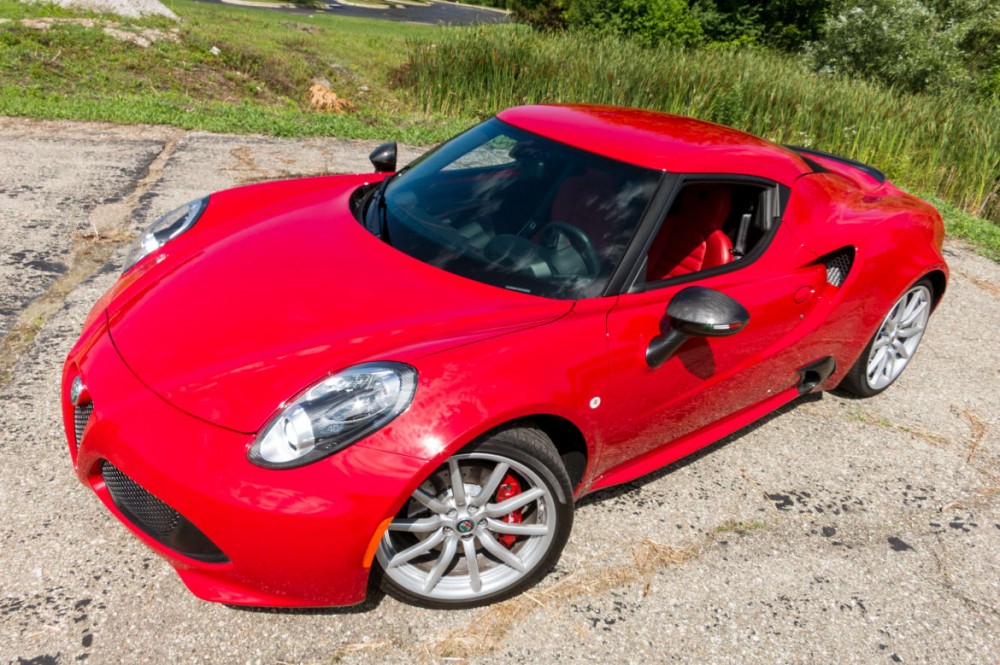
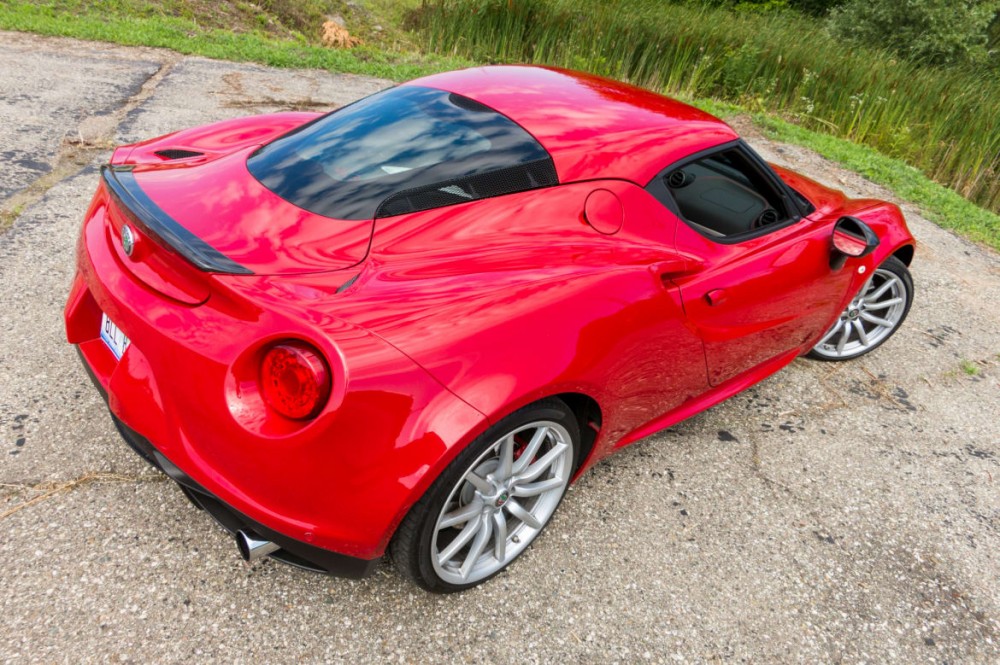
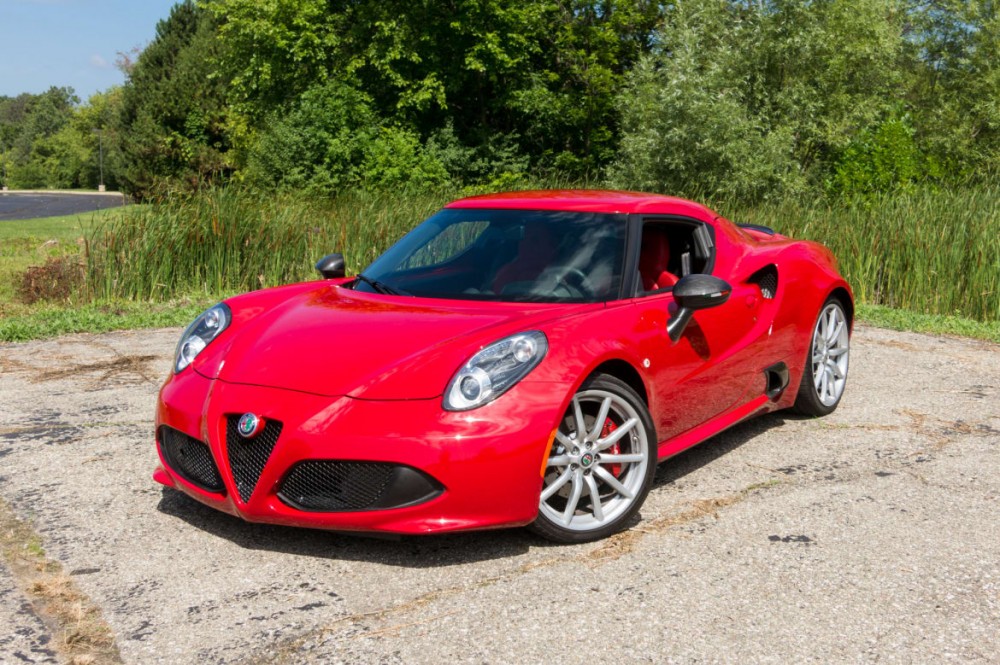
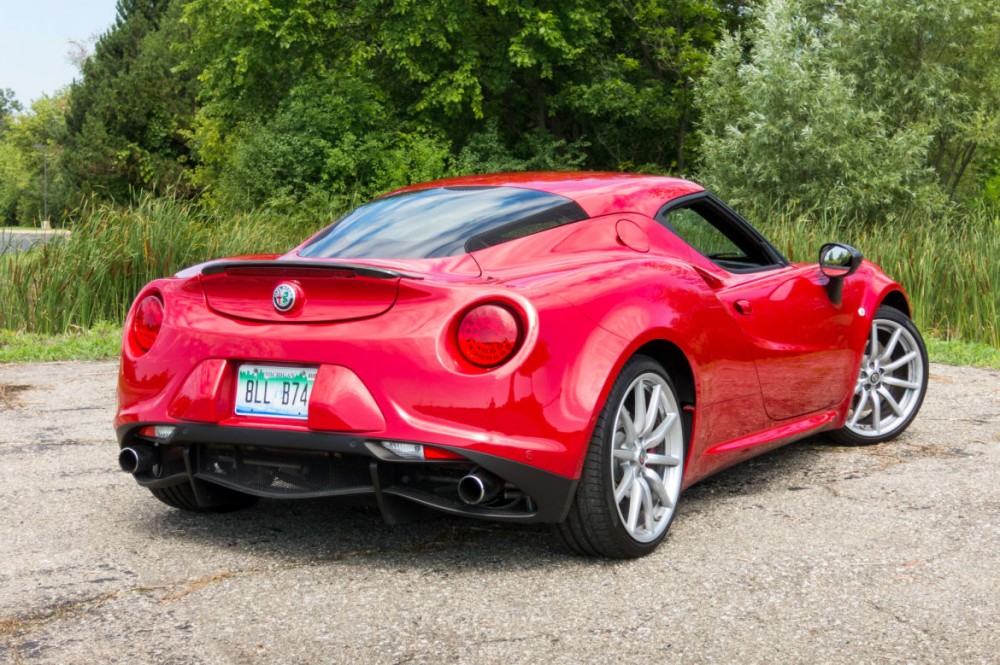
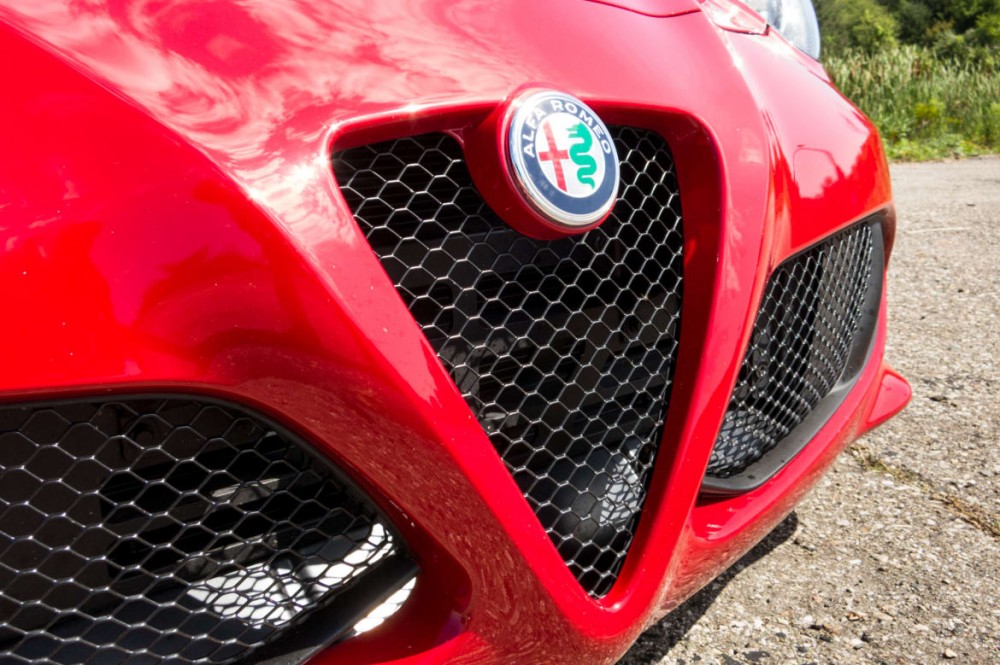
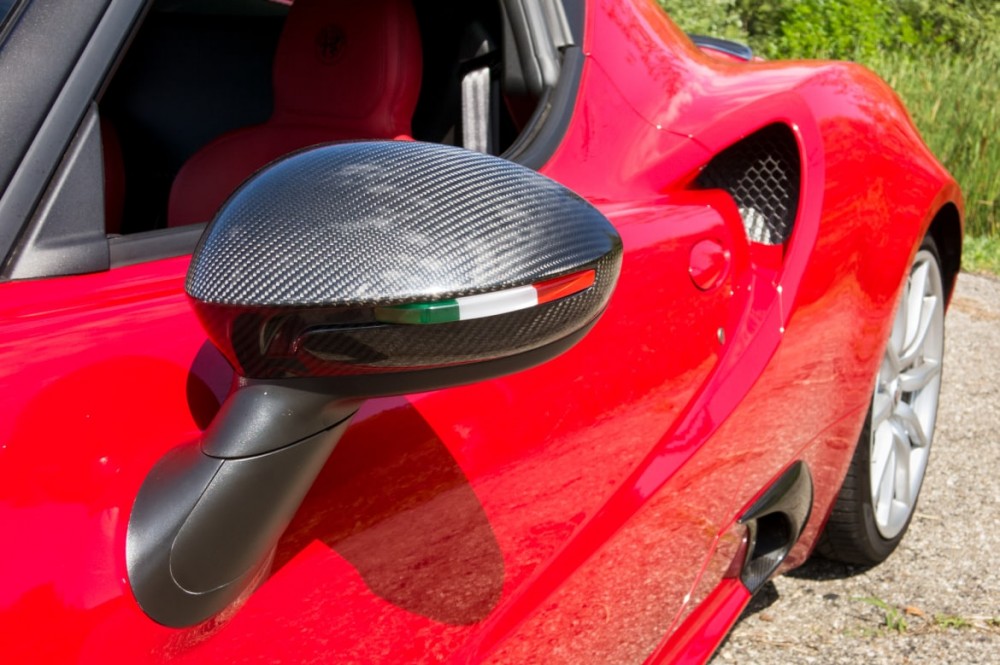
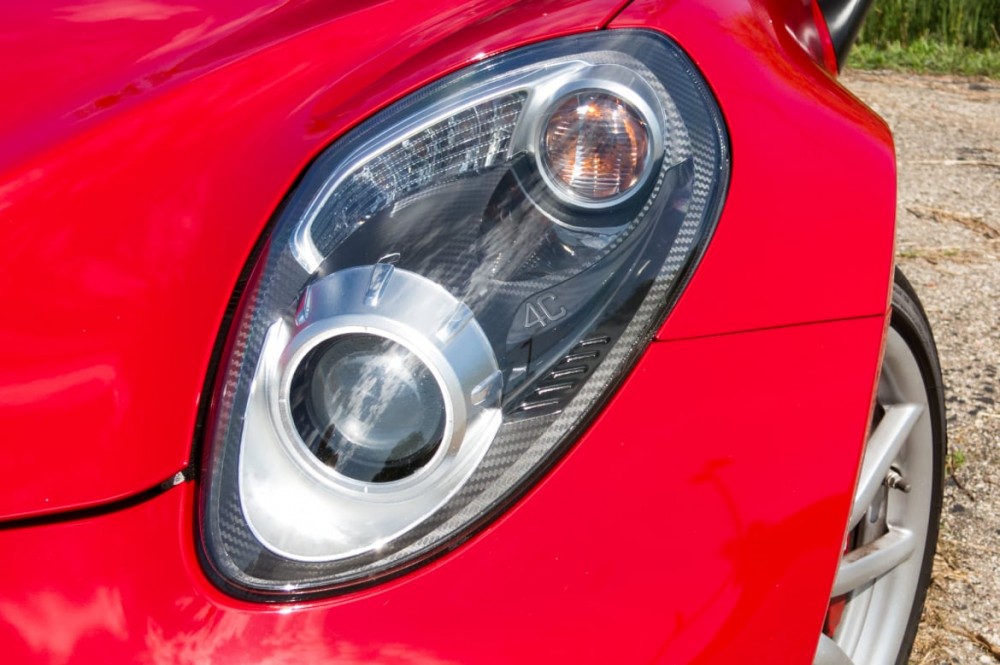
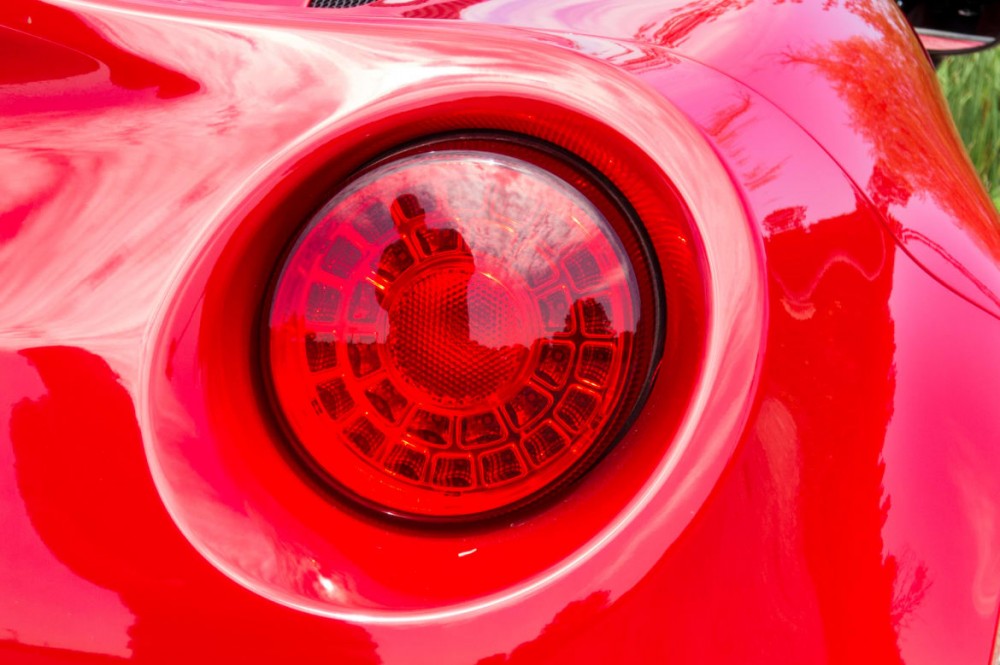
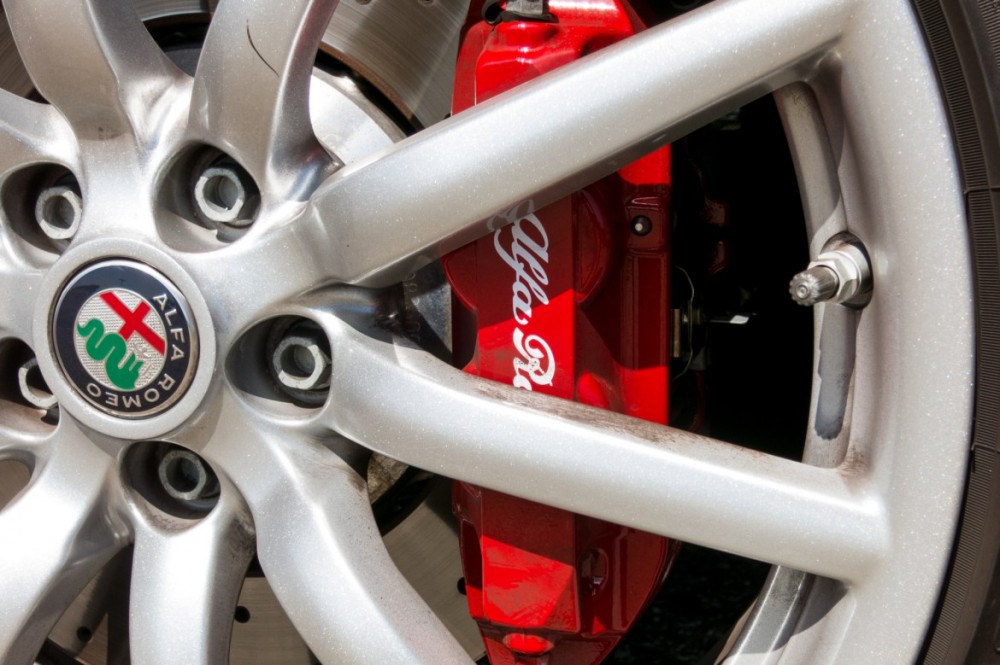
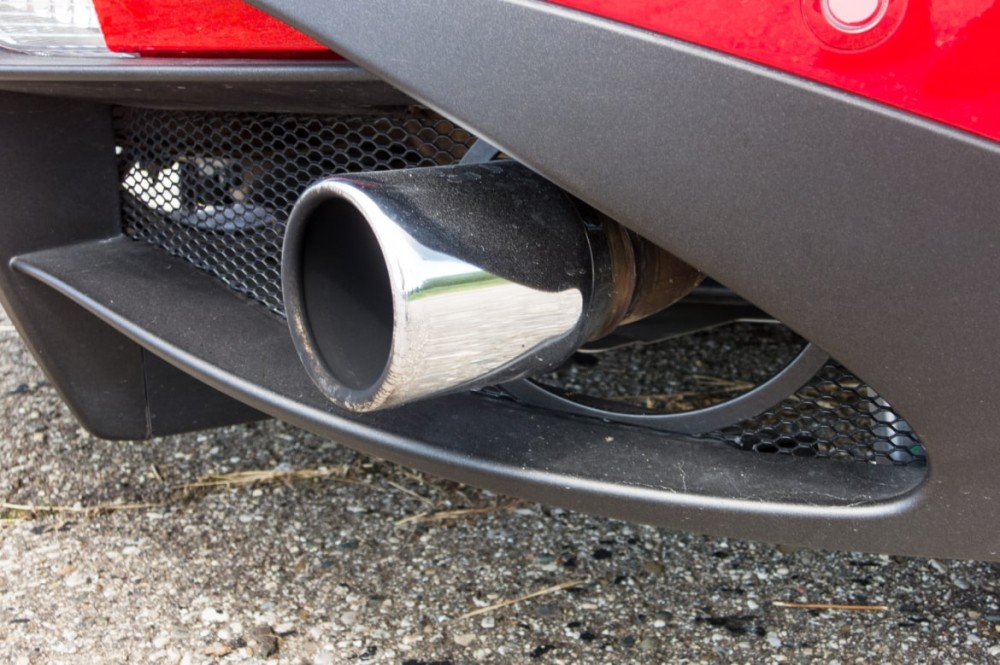
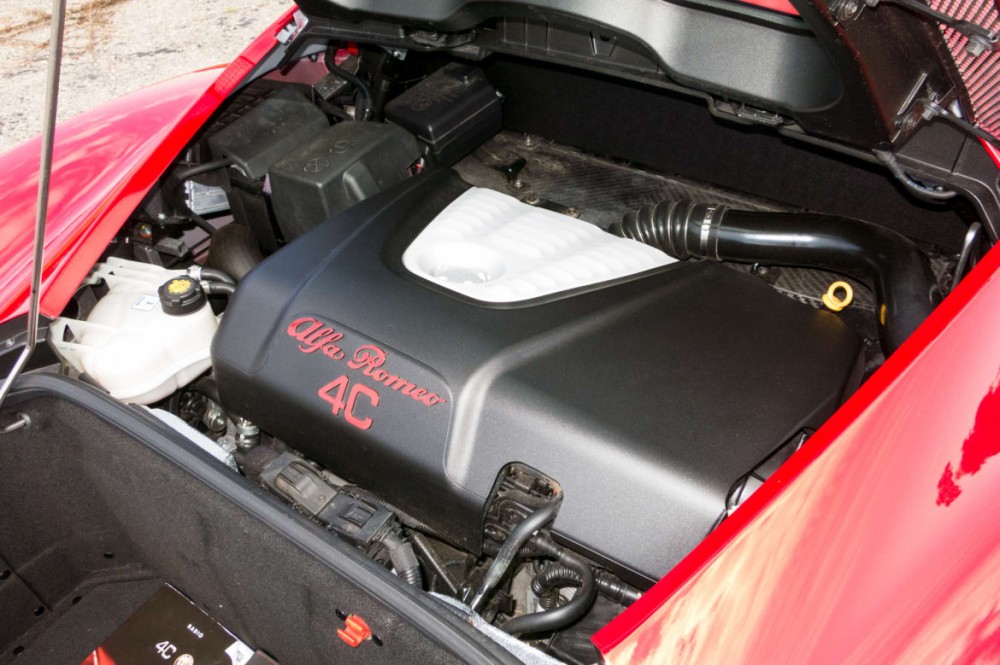
I took the 4C to a car show — an evening of enthusiasts parking their rides in downtown Ann Arbor, Mich., amid other supercars, classics, hot rods, street machines and muscle cars. It was the only Alfa Romeo at the show, and it stopped passersby dead in their tracks with its low, wide, mid-engine-supercar styling. It's not a Ferrari (it's too bug-eyed for that comparison), but it shares a lot of that brand's proportions and scoops. It's striking, it's beautiful, and it being painted in racing red only added to its Italian, exotic-car mystique. The fact that it's a tiny car — shorter than a Porsche 718 Cayman by more than a foot and just 3 inches longer than a Mazda Miata — also added to its uniqueness.
Exotic Car Feels Exotic
If you think it's small on the outside, just wait until you try to get in. The door opening requires you to do the supercar sit-n'-spin maneuver, wherein you plant your butt on the wide carbon-fiber side sills, slide it into the seat, then spin your legs in. It's not for the portly among us, nor for the tall.
If you can make it inside, it's decently comfortable in there, with adequate legroom for most drivers, but the heavily bolstered and narrow seats won't be to everyone's liking, and the driver's footwell is narrow.
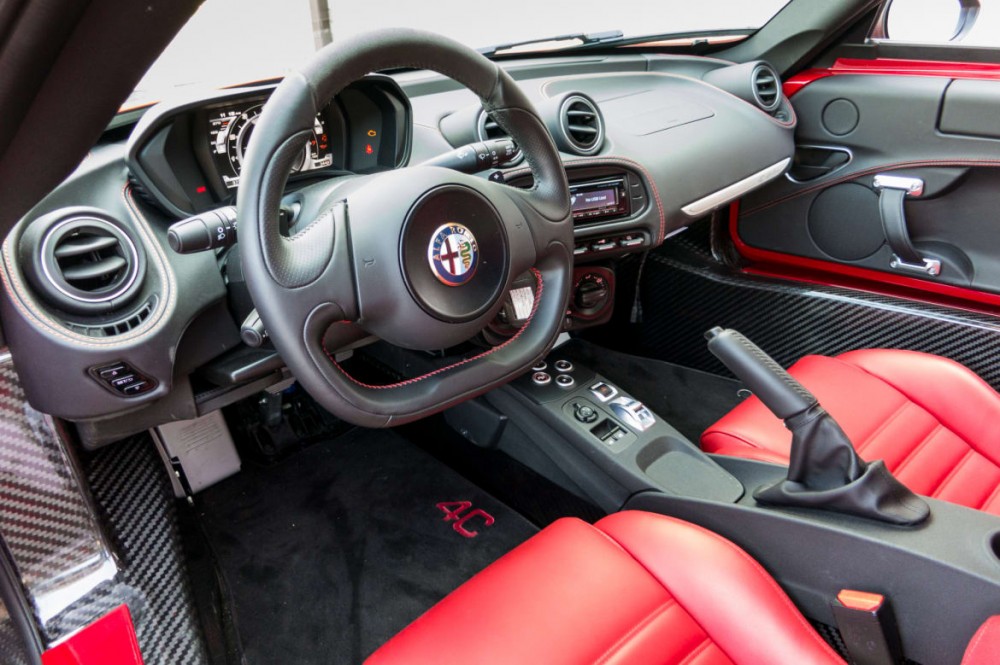

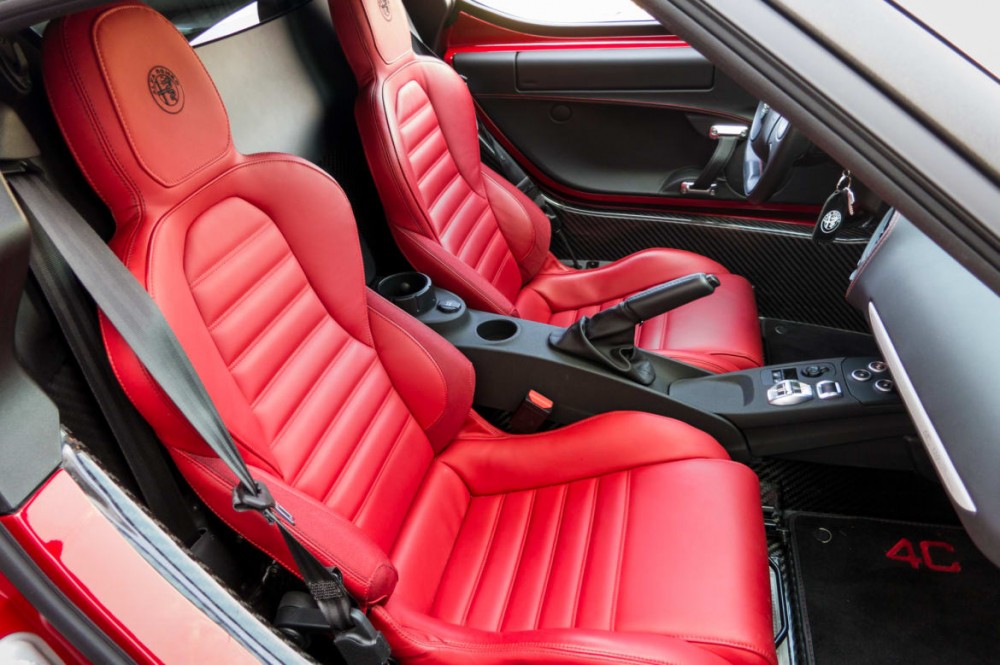
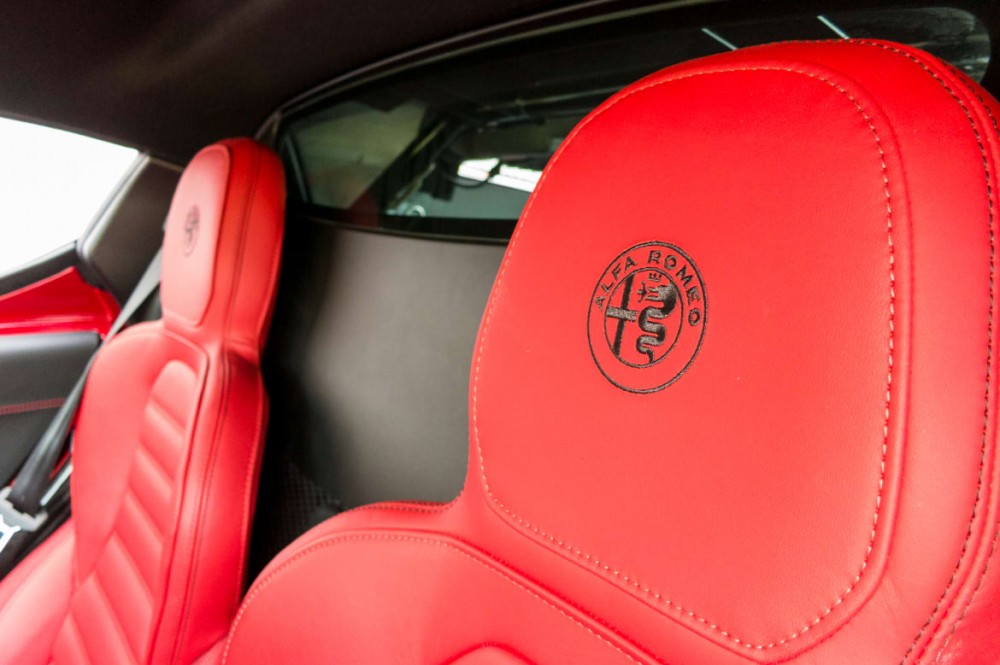
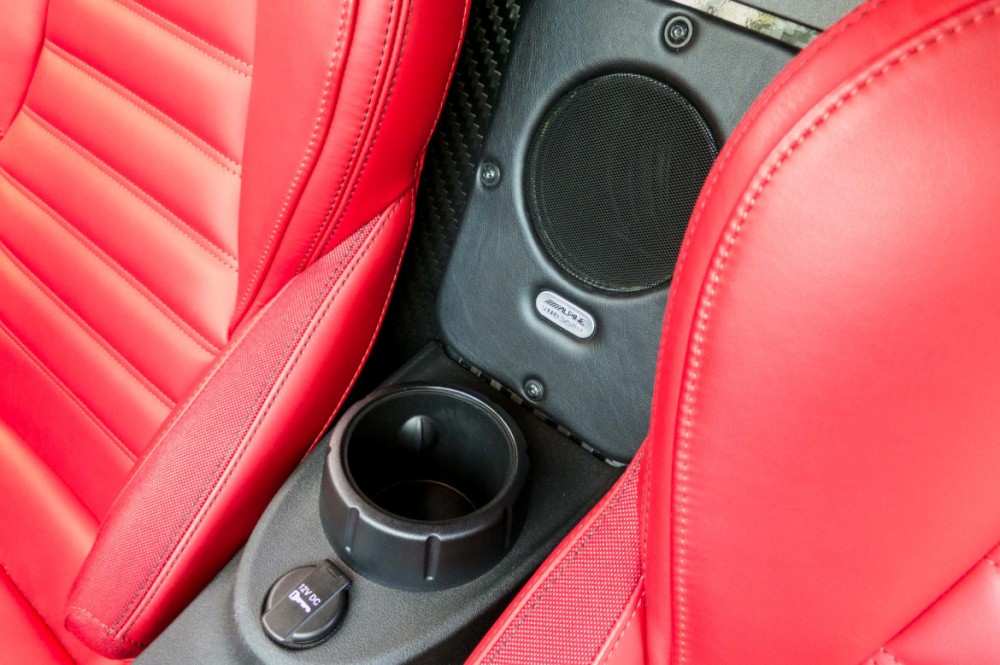
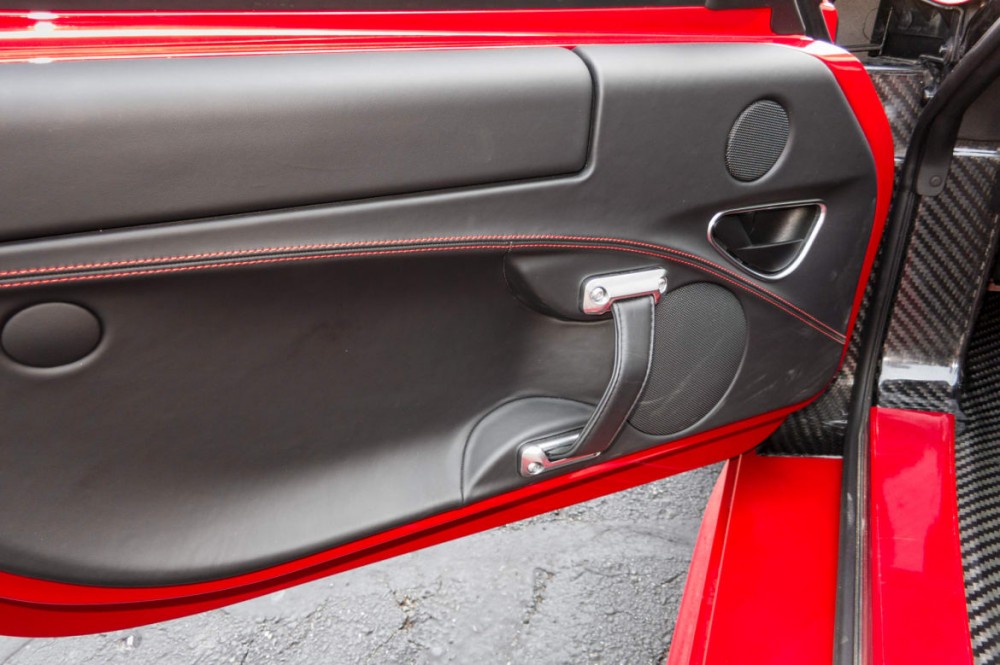

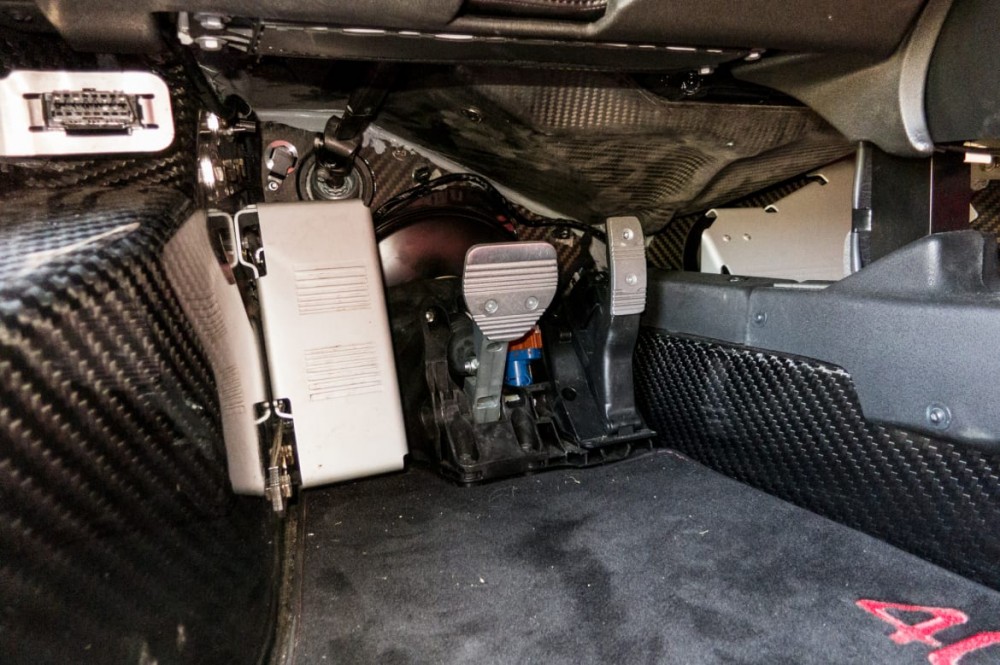
Outward visibility is atrocious, especially to the rear. Those thick B-pillars, and the fact that the tail on this thing is high in order to accommodate the motor, blocks almost any view to the rear — and there's no parking camera to help you out, just some optional, vague parking sensors. The way to back up a 4C in a busy parking lot is to slowly inch backward and listen for a horn or a shout. The forward view is acceptable, with a low hood, but there's also a low roof that can make seeing stoplights a challenge.
Minimalism is the order of the day inside, with tons of exposed carbon fiber and hard, body-color-painted surfaces. There's almost no sound insulation in the cabin — again, a way to keep weight down — but you do get basic amenities like air conditioning and power windows and locks.
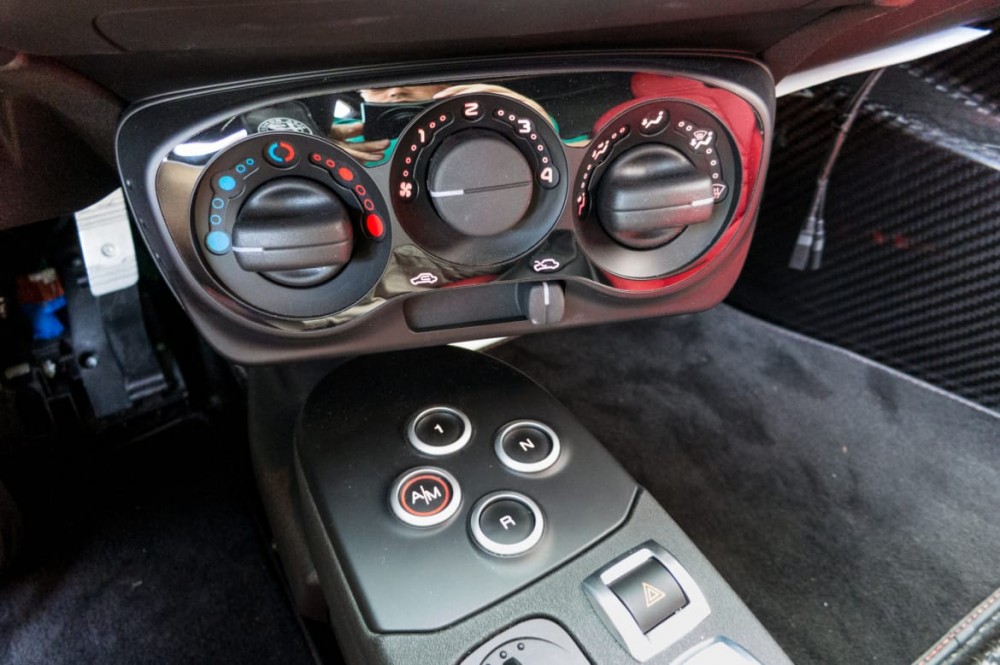


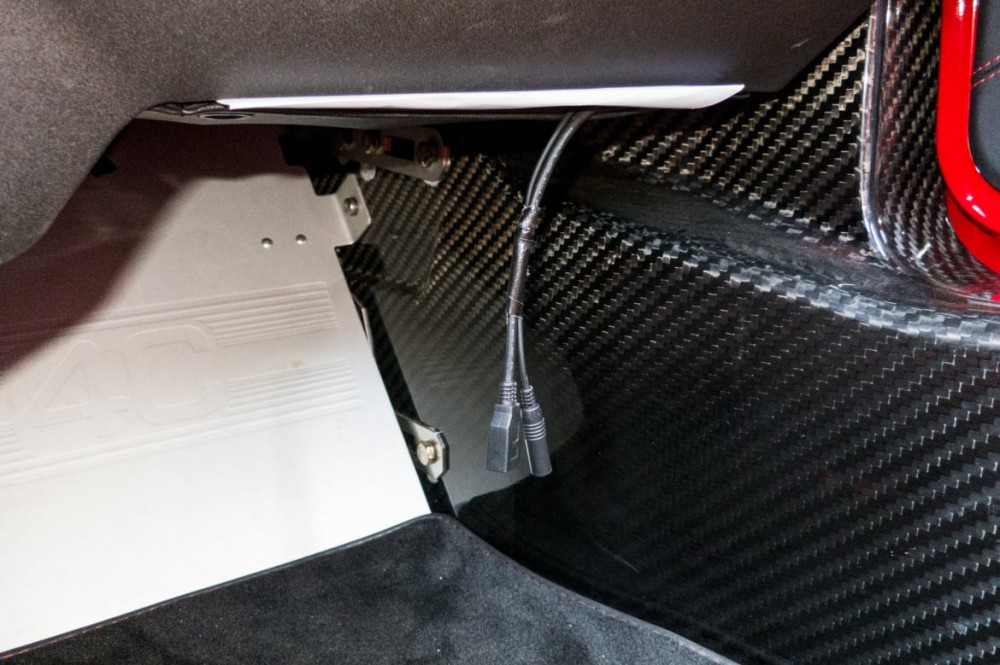
Don't expect anything else in terms of creature comforts. The Alpine audio system is laughably cheap; it looks like something a teenager would buy on clearance at Walmart to stick in a clapped-out Lumina. Apple CarPlay and Android Auto weren't even drawing-board ideas when this stereo was designed. Want to plug in your personal electronics? There's a plug dangling out the bottom of the passenger side of the dashboard that you can plug your own cord into, provided your passenger doesn't kick it or get tangled in it.
There is a tilting and telescoping steering wheel, but the wheel obscures part of the digital gauge cluster regardless of how high you tilt it. The ergonomics need some work: Alfa has taken its inspiration from old classic sports cars a little too literally, making the 4C's interior a primitive, fragile-feeling environment that doesn't quite match the sophistication of the exterior. And while some of this has to do with maintaining an extremely low weight — the whole car weighs less than 2,500 pounds, which is almost 500 pounds less than a Porsche Cayman and 800 less than a Chevy Corvette — you pay for that lightness in discomfort, other frustrations and a sense that you didn't get quite what you paid for.
Forza Italia!
One twist of the key, however, clues you in that despite the challenges of getting into and seeing out of the 4C, you're in for a treat driving it. The tiny, 1.7-liter turbocharged engine roars to life with a snarling growl right behind your head, as it's separated from you by just a glass panel. Surprisingly, none of the engine bay's heat reaches the cabin, but plenty of its noise does. It makes you realize why Alfa didn't put too much effort into the audio system — you can't hear it anyway.
Gear selection happens either automatically, by the car, or manually, by you using paddle shifters behind the steering wheel. There is no gearshift lever, just four buttons on the console, labeled N, A/M, R and 1. Not the most intuitive setup. You start by selecting 1, then either A or M for automatic or manual. The transmission is a six-speed, dual-dry-clutch auto-shift manual transmission, meaning the underlying hardware is more like a conventional manual than a traditional automatic even though it shifts itself. The benefit is that the shifts are lightning-fast, so while you give up the row-your-own fun of a traditional sports car, you gain serious performance.

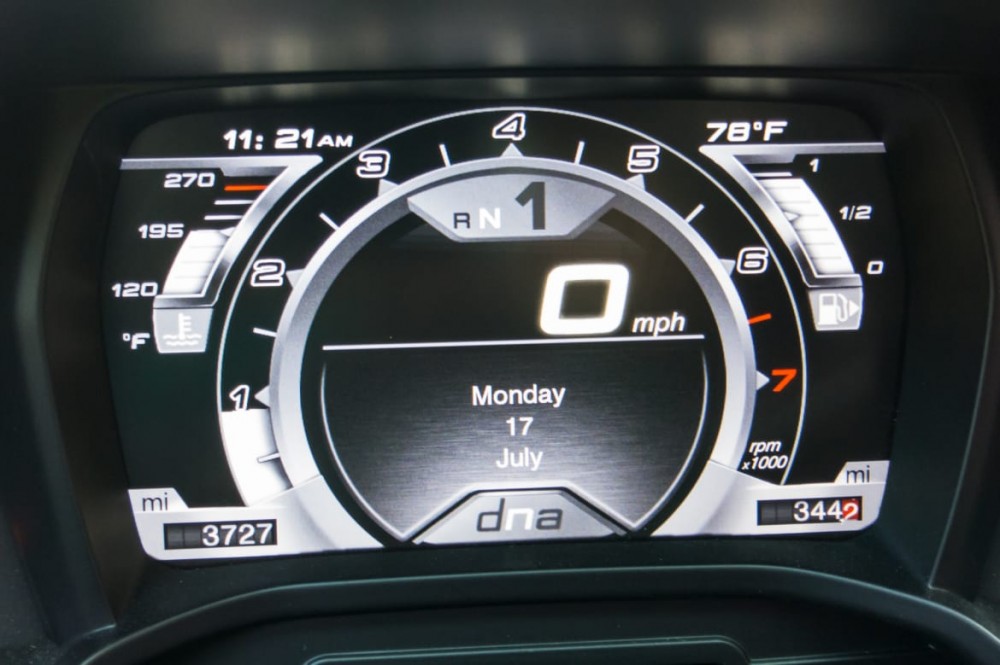
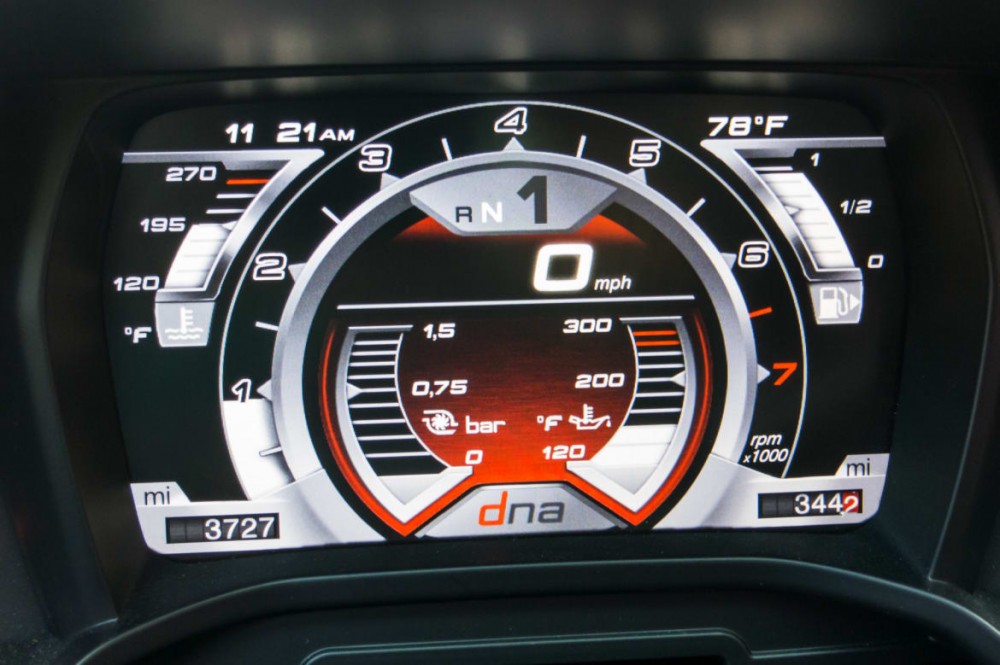
And what performance it is. Use the Alfa "DNA" drive mode selector to put the car in Dynamic instead of Normal mode, and you'll have a baby Ferrari on your hands that responds instantly to throttle, brake and steering inputs. There is no power steering, so there's nothing interfering between the road, tires, suspension and your hands. This gives the 4C incredibly communicative steering with wonderfully entertaining feedback, but it also means you need to devote 100 percent of your attention to driving at highway speeds. It's skittish at higher speeds, where small inputs make big changes, and road imperfections throw you around in the lane thanks to the aggressively firm sport suspension. The ride stops just short of being harsh — but only just.
One twist of the key (there’s no push-button starter here) clues you in that, despite the challenges of getting into and seeing out of the 4C, you’re in for a treat driving it.
The manual steering also makes low-speed use a serious bear. Your arms will get a workout until you perfect the art of driving at a crawl when trying to turn the wheel, which does make things easier than standing still and trying to crank the wheel.
Acceleration is fierce, accompanied by a wailing, turbocharged whoosh that you seldom hear outside of highly boosted Subaru rally cars. The exhaust opens up when put in Dynamic mode, making for a sound that matches the 4C's looks — a snorting, rasping growl that turns every head on the street and draws attention in traffic the likes of which I've experienced only in much more expensive exotic cars.
I found myself keeping the car in Dynamic mode more often than not, as it also changes the throttle input for much more immediate response. Normal is fine, but it's tuned for more relaxed driving. Thing is, in a car like this, you're never really relaxed, so why not go for the gold at every opportunity?
Braking performance is equally strong thanks to Brembo performance brakes, although the floor-hinged brake pedal takes a little getting used to (less so if you're already used to classic Volkswagen Beetles or Porsche 911s). They're firm and strong, and they don't fade under aggressive use. The whole experience is far more visceral than what you'd get in a Porsche Cayman or Chevy Corvette, with very little separating you from the car's crazy speed and ridiculous abilities. There's minimal electronic nannying, no sound insulation, no padding, no adjustable suspension, no moonroof, nothing but you and the absolute minimum needed to prevent you from injuring yourself too severely. It's a throwback to earlier times for sure, but like an old flame or your favorite dish at your favorite restaurant, you're going to keep coming back for more because it's just too good not to.
Safety Features? It Has a Few
Like most limited-production vehicles, the Alfa Romeo 4C has not been crash-tested by the Insurance Institute for Highway Safety or the National Highway Traffic Safety Administration.
It does make some allowances for safety systems, like side and knee airbags and mandated traction control, antilock brakes and electronic stability control. Backup sensors are optional, but there's no backup camera (and there really should be, given the abysmal rear visibility). Cruise control is optional, and as for advanced collision systems like collision avoidance or anything autonomous — well, autonomous driving is not what this car is about in any form. All that stuff is part of the reason today's sports cars are so portly, and the 4C will have nothing to do with that, thank you very much.
Cargo? See: Safety
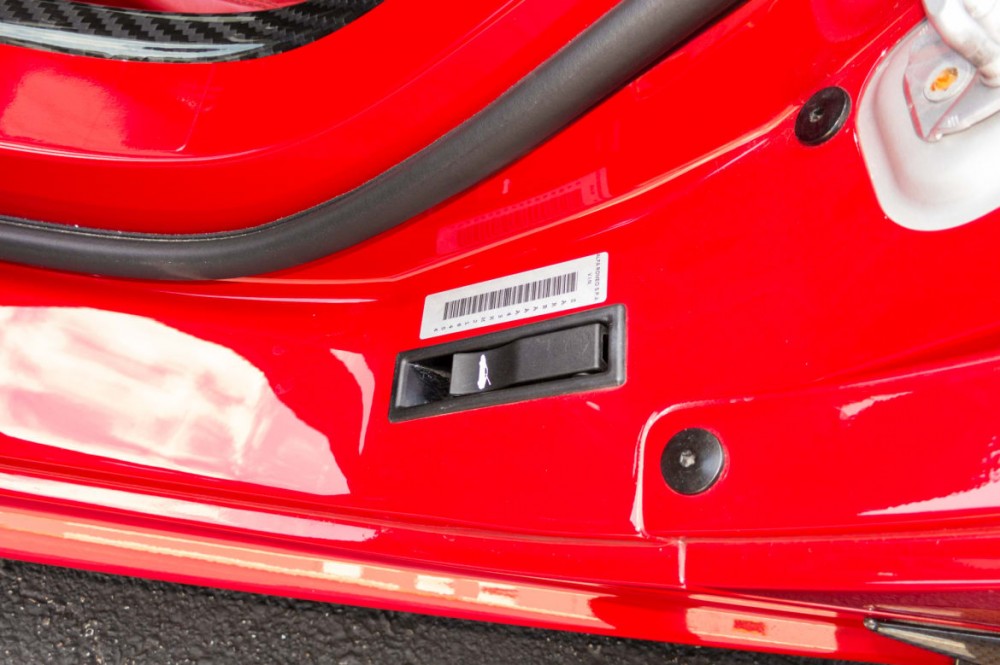
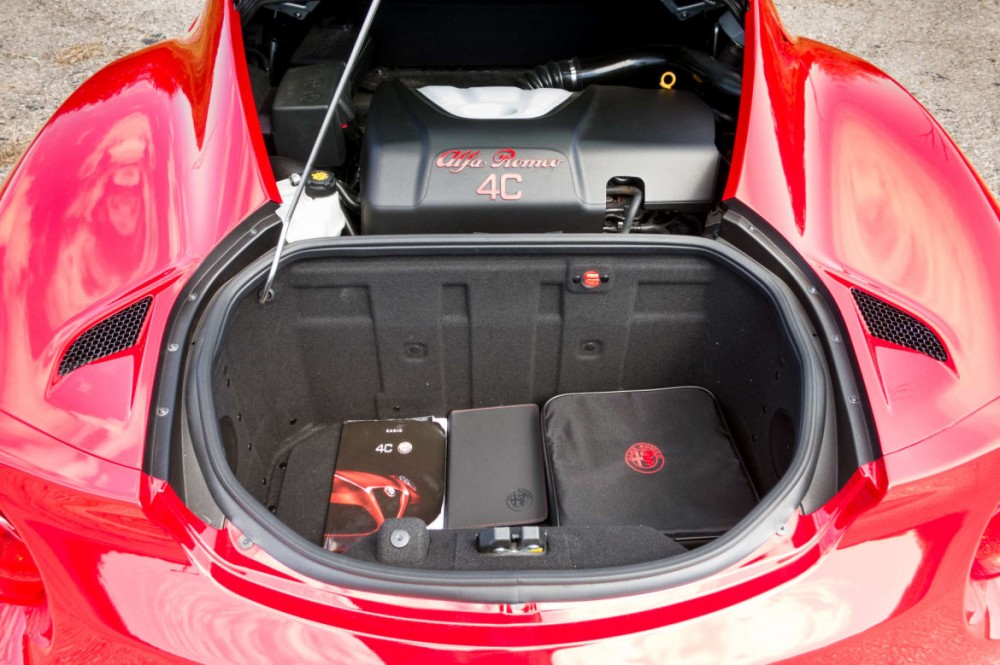

Like leaving no allowances for safety features, the same thing goes for cargo room. The only space the 4C has for your stuff is behind the engine bay: Pop the rear hatch and you'll find a small space that can accommodate a standard-size roll-aboard suitcase. But it's not insulated from the heat of the motor just inches away, so this is not the car to take to buy a gallon of ice cream unless you want to keep it in the cockpit with you. There's also very little interior storage room, with just one cupholder and no good place to stash a cellphone. But that's okay — you shouldn't be on your phone or drinking anything while driving the 4C, anyway, as that would require having one hand off the wheel, which is not what you want to do in a car this razor's-edge.
Pricey for a Four-Cylinder, Cheap for a Ferrari
The starting price for a 2017 Alfa Romeo 4C coupe is $57,495 including destination. That price gets you a standard, base coupe with minimal equipment — just power windows and locks, aluminum pedals, air conditioning, Brembo brakes, remote keyless entry and LED running lights. My test car featured items like $1,500 red paint, $1,500 leather seats and $2,000 worth of other leather interior bits, plus cruise control, rear parking sensors and an Alpine sound system with subwoofer.
There's also an available track package with a carbon-fiber spoiler, leather steering wheel and even more aggressive suspension tuning. The 18-inch wheels add $1,800, and bi-xenon lights are $1,000. All told, my test car rang in at $71,045 — a lot of money for a four-cylinder sports car but a veritable bargain for what turns out to be a three-quarters-scale Ferrari 488.
Competitors make some compelling arguments. The closest in price and layout is the Porsche 718 Cayman coupe, which starts within a few hundred dollars of the Alfa and features a far more comfortable interior. Yet while the Cayman is an outstanding sports car in its own right, it doesn't have that direct-connection feeling the Alfa does — a totally plugged-in, non-insulated experience you just can't find anywhere else outside of a used Lotus Elise.
The Chevrolet Corvette is the same way. While it forgoes the mid-engine layout for a front-engine setup (for now, wink wink), it provides its own level of fun and excitement with a far more American V-8 bluster. It, too, has a lot more comfort and modernity built in, but while it's far more capable as a sports car now than in previous generations, it's still more of a grand tourer than the track-ready Alfa. Compare the Alfa and a few of its competitors here.
With limited production runs every year, the Alfa Romeo has more exclusivity and rarity than any other sports car in this price bracket. Its limited amenities and decidedly track-oriented abilities limit its appeal, however — if you see someone driving one, you'll know they sought out this specific vehicle; they didn't land on it because of a deal or out of convenience. And for shoppers looking for the kind of thrills it provides, the Alfa Romeo 4C will not disappoint.








